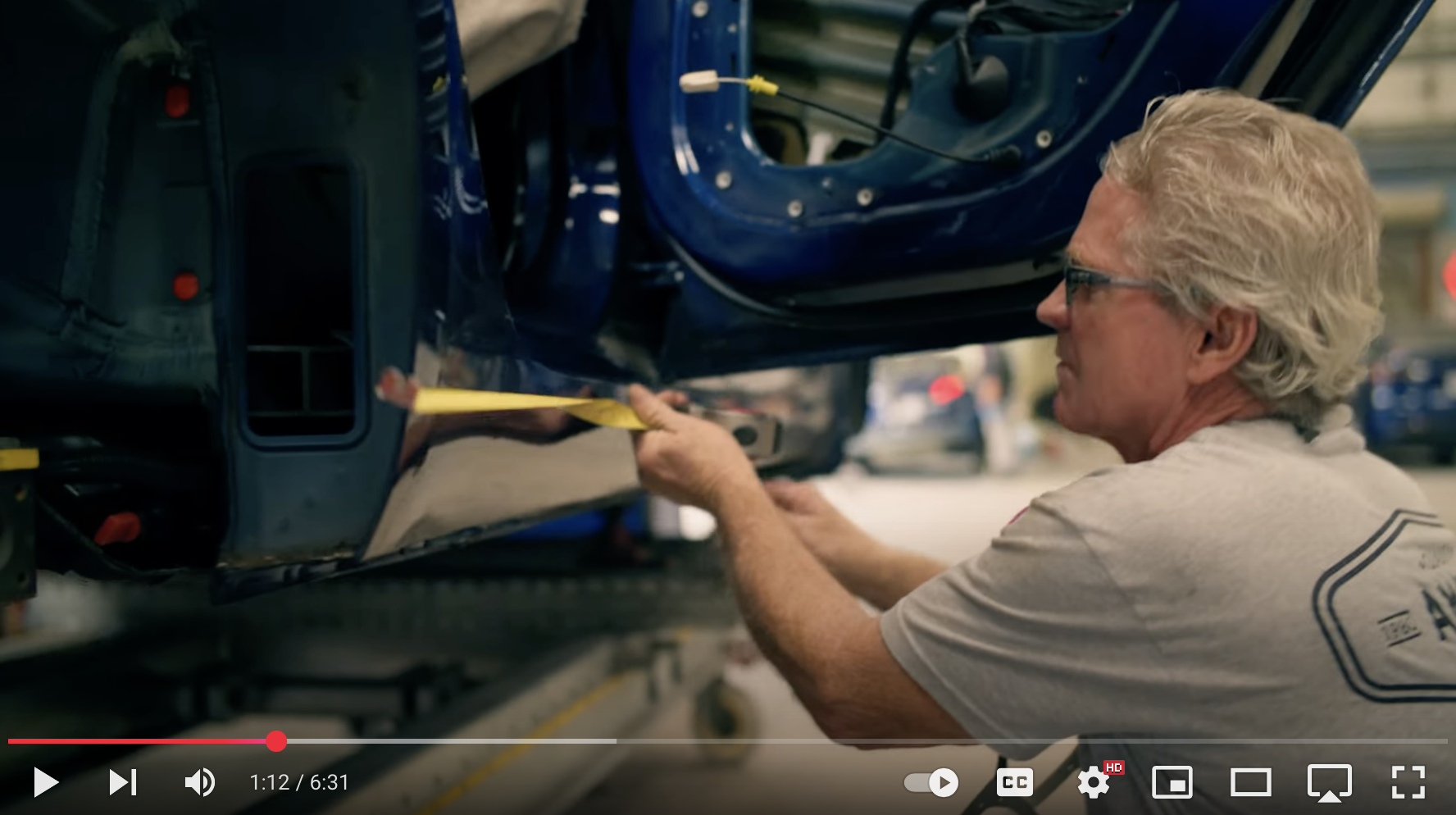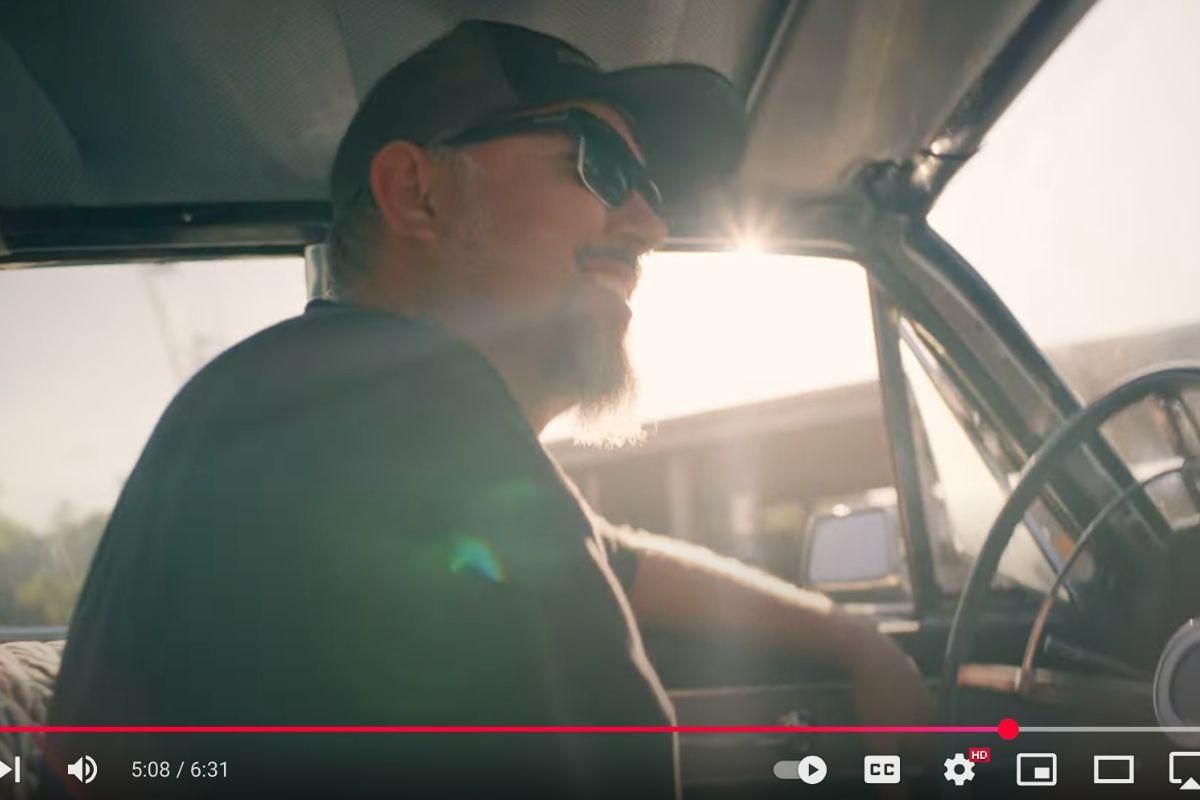“One million YouTube subscribers means nothing to me,” insists Troy Hall, chief marketing officer for Quality Collision Group (QCG).
Still, you don’t expect to see it from an MSO. And it’s actually 1.1 million.
“That audience is global,” Hall said. “South Korea doesn’t benefit the business.”
If anything, “the watch time is more important,” Hall said. Since October 2023, QCG’s YouTube channel has logged 7 million views totaling 111,000 hours – half the produced length of the videos uploaded to it.
That doesn’t mean every video is half-seen, but the totals on average are indeed north of 50% for “shorts” of less than 90 seconds and full videos of several minutes long. Most glance and move on, while some watch it all.
QCG initially promoted platform content, not much now. And YouTube isn’t its most valuable “social” work.
Telling Stories, Sharing Pictures
Instagram is.
“It’s heavily skewed toward our industry,” Hall said. “Our community, car people.”
It’s photos, but really the conversations. If people prefer videos like YouTube, Instagram has that too.
“YouTube just wants content,” Hall said. “It’s not a ton of engagement [like Instagram], not a community.”
Another good outlet is LinkedIn. That’s where many MSOs go to attract talent, and to fill their M&A funnel.
CEO Jerod Guerin “attributes 80% of our M&A to marketing, and says 20% is influenced by it,” Hall said.
QCG doesn’t market on Facebook, which in body shop groups leans toward baseball, tire kickers and stale-joke photos of pizza, and overall is perhaps seen more in the industry as a place for direct-to-consumer ads. It can also be good for talking with techs generally, at the level of their daily concerns.
The MSO has also done TikTok -- videos again, and capturing younger crowds -- but “we’d paused because of the ban and haven’t started up again,” Hall said.
The ROI of Not Being Naked
As social media became a thing, it became one to promote the business, from Etsy and ebooks at one end, to cars and carnitas and caramel-colored fizzy sugar water on the other.
Then came the questions. When do customers show? How is this worth it again? Profits?
One SEO guy said this missed the point: “Using social media to market is like using a dinner party to increase your downline,” he tweeted. Another similar response: “What’s the ROI of putting on your pants?”
It’s expected. Now what?
You can do quality, or not so much. Hall passed on the second one.
QCG has hired in-house creative director Nizar Babul and contracts with outside producers Daniel Egnal and Gabriel Lee, of Verebonum Films in Dallas, to make movie magic.
The team doesn’t want bad training video reels. “Our content looks and feels like a documentary,” Hall said.
When the crew shows up to shoot, often after an acquisition, it gets longer videos, shorter clips -- and the latter from the former -- which it can post to both YouTube and Instagram. The focus is on people.
“Consumers know who’s repairing the vehicle: the technician in the back of the shop,” Hall said. “My goal is to highlight the people doing the work. I thought we’d have success because nobody has taken this approach.”
Biggest Benefits Are Ones You Don’t See Until It’s Too Late
It’s not a “social media” team, “though there’s a place for that,” Hall said. “Part of the strategy is the car piece: you get a car guy, he’ll talk to you all day long.”
 Screenshot from QCG's YouTube channel video featuring Amato's Auto Body.
Screenshot from QCG's YouTube channel video featuring Amato's Auto Body.
This refers to techs talking about their personal projects. The first in the “QCG Garage” series, at Amato’s Auto Body in San Diego, included discussion of several vehicles, and the families of employees restoring them.
No prompts like “So, how much do you really love QCG?” and rarely technical talk -- just techs talking.
Stories thread through videos in their voices. And it supports them: 70% of QCG workers come via acquisition and most have cars. Talking with employees, managers and owners and broadcasting the results strengthens company culture, Hall said.
“That’s our biggest ROI,” he said.
Workers “see what we’ve produced, and get excited when we come to town,” he said. It’s people “providing for their families. They’re proud of that, and should be. This is an avenue to promote their work.”
A restomod -- a 1984 Corolla, that also showed up on LinkedIn -- is also in the conversation with former owners of B&S Hacienda Auto Body, eight units near San Francisco, a video now being edited. The Sanchez brothers, who stayed on after selling, remembered their grandfather, who started the business.
“It’s four generations,” Hall said. “Their parents are in it. It has nothing to do with QCG or collision.”
Or it does, but indirectly.
“The ‘body shop’ community is small, but ‘car people’ is large,” Hall said. “This content has resonated.”
The Hero’s Journey, Collision Center Style
It’s for the shop, but not pushing is personal and personable -- “work on it like it’s your momma’s car” -- with an occasional flash of the phone number painted on an exterior wall. And if techs speak Spanish, well, your video is now bilingual.
The story’s the thing.
Hall’s markings are part of a wider business embrace of storytelling, the co-opting of which -- the calling of anything with a beginning, middle, and end a “story” -- must be fled, or fought.
Work “speaks to our model and the larger goals of our company: authentic, OE-centric, an owner’s legacy.”
It’s the hero’s journey -- think the original “Star Wars” (fine, Episode 4) -- writ small: the call, adventure, return. And a body or paint guy gets to be the hero, alongside grandsons of the founder, or the founder himself.
Hopefully a little like this article, if you started out skeptical, initially refusing that call. Now go adventure.
“The main challenge with producing high-quality content is we’re a couple months behind,” Hall said.
Production time is shrinking; QCG Garage is 108 videos and counting, which will never be “talking about MSOs.”
No. “It’s telling peoples’ stories,” Hall said.
And telling them to people.












Paul Hughes